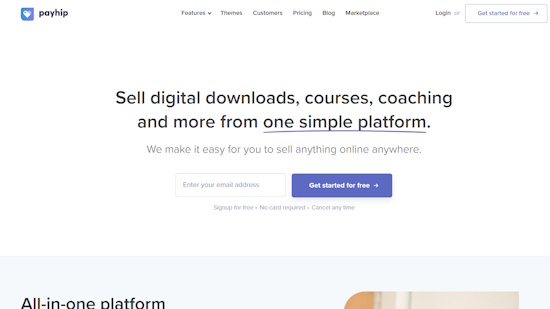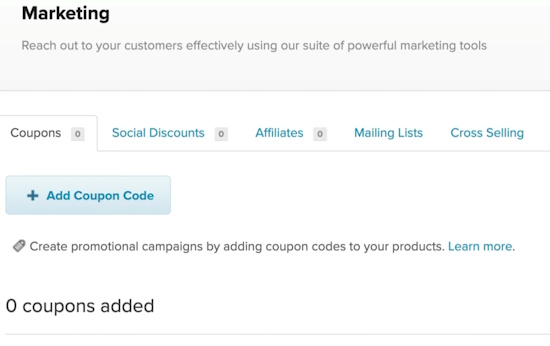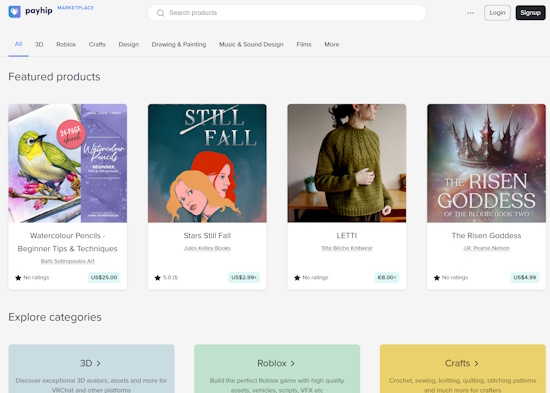2. Building And Selling Digital Products
Payhip 101

Payhip has become one of the most talked-about platforms among digital creators, particularly indie authors and bloggers. Offering a streamlined way to sell digital products like ebooks, courses, and templates, Payhip markets itself as an all-in-one solution. But is it truly as creator-friendly as it claims?
It is in a market with the likes of Clickbank, Amazon, Gumroad and Draft2Digital. It will need to have something that authors can get behind.
This comprehensive guide breaks down the positives, negatives, and real-world feedback from creators who have used Payhip extensively.
So what is Payhip?
Payhip is an e-commerce platform that enables users to sell digital downloads, memberships, online courses, and physical products. The standout feature? You can start selling with zero upfront cost on its free plan, paying only a transaction fee per sale.
However, a lot of platforms do this- especially so Gumroad...so at the moment is there really a need to change?
The positives of Payhip
- No Upfront Costs
The free plan includes all major features. Sellers only pay a 5% transaction fee. Paid plans ($29/month and $99/month) reduce or remove transaction fees. 5% fee on the free plan, 2% on the $29/month plan. Only the $99/month plan removes fees. At the time of writing- there are also credit card charges, similar to Gumroad.
- Feature Parity Across Plans
All plans include the same functionality; the only difference is the fee structure.
- User-Friendly Interface
Easy to set up, even for non-tech-savvy users. Drag-and-drop product management with minimal setup time.
- Unlimited Products and Sales
There are no limits on the number of products, earnings, or downloads.
- Automated VAT Handling
Handles EU and UK VAT compliance automatically. Particularly helpful for international ebook authors and sellers.
- Digital Rights Management Tools
Includes PDF stamping, download limits, and license key generation.
- Marketing Features
Built-in tools include: Coupons, Product bundling, Affiliate management, Cross-selling
- Multiple Product Types
Supports digital downloads, courses, memberships, and physical goods.
- Secure Digital Delivery
Files are securely hosted and delivered, with controls on number of downloads per user.
- Accepts Global Payments
Works with PayPal, Stripe, and supports international currencies.
This sounds all great, but again...what is the main difference between this and Payhip's competition? They all deliver these positives in a roundabout way.
Payhip offers a little bit more
Gumroad and Payhip are very similar, what Payhip does it to give you a little more. And that little more actually is really helpful.
What?
Here is our Gumroad storefront, where people get to see what you are about and see your offerings:

Seems nice, but it is limited to roughly what you see. Now, should you just rely on a storefront to do this no. But if you had no website then a storefont announces you. KDP has one and so does Payhip.

Payhip has themes. It also allow your to customise buttons, colours, fonts and banners.
Additional Payhip
Creating the ebook and placing it online is not that hard. What is a bit on the difficult side is actually getting people to buy it. Some companies like Amazon have sales built into their logarithm. The more sales you get the higher your ebook ranks which gives it more chance of selling more.
Gumroad doesn't do this. Sure you can add products to your offer, effectively "bumping your original offer" This means you offer more products ontop of the basic product, upselling if you like. You also get an affiliate package- give people a percentage of the sale if they sell the product for you. And you get a mini email marketing system.
With Payhip you get a mini marketing suite:

Marketing and Marketplace for Gumroad and Payhip
Here are some of the note worthy marketing suite tools that you can use.
- Social discounts. this is cool. If someone promotes you on Facebook you can give them a discount
- Affiliates
- Mailing list. You can set up different mailing lists. And on the subject of email marketing, both Payhip and Gumroad allow you to export your customers and then import them to an email marketing platform. With Payhip, you can work with the specific email platform. But both Payhip and Gumroad work with Zapier which allows both companies to work with whichever email platform you use.
- Cross selling. Promote other products in your line- or buy one get one half price
- Upgrade. You can offer a product and then get a discount on another product
Payhip also gives you a little bit better analytics- where does traffic come from views etc.
How about a marketplace?
Gumroad does offer a marketplace, called Gumroad Discover

And then we have Payhip Marketplace

Both are very similar. But there are positives and negatives to each:
Gumroad: Has A Algorithmic Discovery at Scale
Gumroad doesn’t just let you sell digital products—it also tries to help you get discovered. Their internal marketplace, called Gumroad Discover, suggests your products to buyers based on their interests and past purchases. It works similarly to how Amazon recommends products.
However, there's a catch: to be included in Discover, you must opt in, and sales made through the Discover channel come with a 10% fee, on top of their standard rates. It is also vetted, your products need to be checked. And, you need to have at least $10 in sales (not self purchase) for consideration. The upside? Many creators report gaining sales they otherwise wouldn’t have.
Payhip: A Quiet Marketplace
Payhip also has a marketplace, but it’s more like a public directory. Your products are listed under categories and searchable by visitors. There’s no algorithmic push, no personalized recommendations, and far less internal traffic than Gumroad.
That said, Payhip doesn’t charge any extra fee for marketplace exposure. Your products will show up as part of their listings, but you'll need to bring most of the traffic yourself or hope for organic search visibility.
What is also neat is that Payhip marketplace is separate from your storefront—giving you more ownership over the customer experience.
Testimonials?
What do other authors and users of Payhip think? Now, take some of these with a pinch of salt as they are from community websites, but generally, Payhip use is generally positive.
- “Cheaper than Gumroad… feels very creator friendly. They take 5% on free plan… you can pay $99/month instead of per‑transaction fee.”
- “This platform has a history of account removals and content filtering without clear communication. Users have reported slow page loads… lack of reliable customer support…”
- “Checkout flows are terribly ugly... The shop design tools are great, but the backend dashboard and checkout UI are severely dated…”
- “It’s a good solution for a few digital products with no subscription cost… Good for me since all I need is the sales processing functionality.”
- “I use it, I barely make sales through this channel, but it's free and you keep almost all of the money… Payhip is great—the easiest DIY storefront I've seen. Great also for PDFs—with watermarking.”
So which one?
Ebook selling platforms are mainly what you need from them.
Payhip seems to fit many boxes for the startup author. And in other cases it just misses the mark. If Gumroad wasnt there then Payhip would be an easy win. With Gumroad present, you get to compare. Customising and price seem to be helpful for Payhip.
I disagree with some people stating that Pyahip looks old. It looks functional to us. Customers don't see that end of the business, they see what you show them.
Payhip can do what Gumroad does, so it is down to personal choice. But somethings are worthy to note:
- If you are just starting out, don't pay out $x/month just to have your ebook hosted. Go free initially and then increase when you need it
- These are platforms in the big scheme of things, they don't sell for you, you really need to generate the traffic for sales to start.
And us? We went with Gumroad. Why? Because we used it first. And that maybe the issue with new ebook selling platforms appearing. What would make an author change from a platform that they learned to something new which they have to relearn and only offer a few additional positives?
Check out more how to sell ebooks here
Jasonera blog? Can be found here.
#Payhip vs #Gumroad. Very similar. Why change over though? What is the big difference in either that will increase ebook sales?
— Dominic (@MyJasonera) July 21, 2025
About. Updates. Disclaimer. Privacy. Mission/ Vision. FAQ. Newsletter.
Copyright © 2024- Jasonera.com All rights reserved





